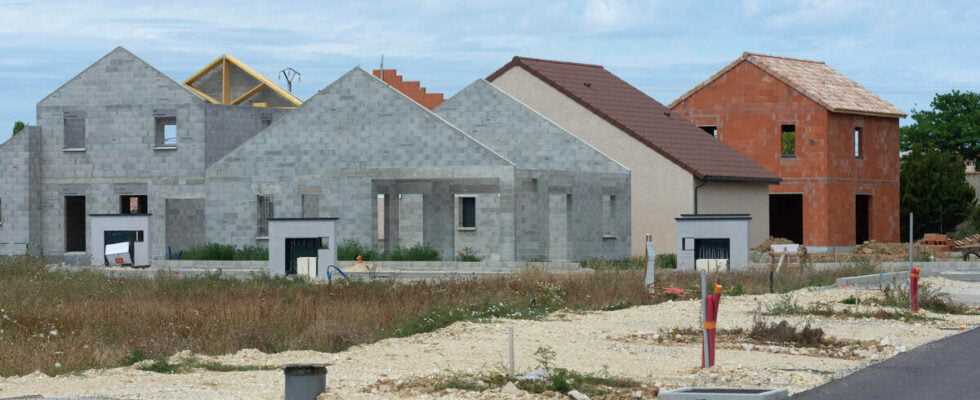According to estimates published this Friday by the Ministry for the Ecological Transition, building permits have started to rise sharply again in 2021, driven largely by pavilions and housing estates. Good anti-Covid refuges but “ecological nonsense”.
The pavilion, post-Covid star? The number of building permits issued in France in 2021, published on Friday, exceeded pre-pandemic figures, with a significant increase in single-family homes. According to estimates released by the Ministry of Ecological Transition, there were 471,000 housing units authorized last year. Not only is this significantly more than in 2020 (18.9% increase), when the confinements had put a stop to activity, but it is also more than in 2019 (+4.6 %), before the outbreak of the Covid. You have to go back to August 2018 to find a higher figure over 12 months.
But above all, the increase is very clearly driven by pavilions and housing estates: with 211,800 building permits for individual housing, i.e. 15.8% more than in 2019, this sector has not been so dynamic for almost 10 year. This confirms a strong increase among the French for green and the desire for gardens with the release of confinement.
Collective housing (259,200 building permits) has also emerged from the hole of the health crisis but still remains below pre-Covid. “It’s driven by individual housing, it’s really one of the highlights of the figures that have just come out, explains Clara Wolf to AFP, economist at Meilleursagents.com In all the polls we do, there is this desire for green, for space, a certain disenchantment of metropolises in favor of peri-urban areas.
A fashion that is not very climate-compatible
A trend that “doesn’t go too far with the story”, comments the economist, since it is in contradiction with environmental imperatives. The Climate and Resilience Law, promulgated in August, sets the objective of avoiding the artificialization of soils, which contributes to global warming and the loss of biodiversity.
However, real estate programs can be very land-intensive, especially individual houses. Housing Minister Emmanuelle Wargon had qualified them in October as “ecological, economic and social nonsense”, also pointing to the dependence on the car they entail. This had drawn the wrath of the construction industry to him.
On the side of real estate professionals, the fear of seeing prices soar in 2022 is strong. For Pascal Boulanger, President of the Federation of Real Estate Developers, “we are headed towards a housing crisis” because too few building permits are granted. We are still, he notes, below 2017, when building permits peaked at nearly 500,000 per year. Especially since from 2023, the “thermal strainers”, i.e. housing that consumes too much energy, will begin to be excluded from the rental market, raising fears of rising prices.
The number of construction sites still below the pre-crisis level
Another concern comes from the building sector. Because according to data from the ministry, to be taken with caution due to a change in methodology during the year, the building industry is struggling to keep pace with the recovery. With 386,700 housing starts estimated in 2021, France remains slightly below its pre-crisis level.
Construction professionals have already suffered from rising material costs and supply difficulties following the pandemic. And some have had to delay or postpone their construction sites, alerted Capeb, the sector’s employers’ union, on Thursday.
The entry into force on 1 January of the “RE2020” environmental regulations risks accentuating the phenomenon. It imposes buildings that consume less energy and are better suited to heat waves, for example by installing heat pumps, and constructions with more ecological materials, such as wood, which risks increasing the cost of the work, and therefore to delay building sites… or to increase the price of houses.
